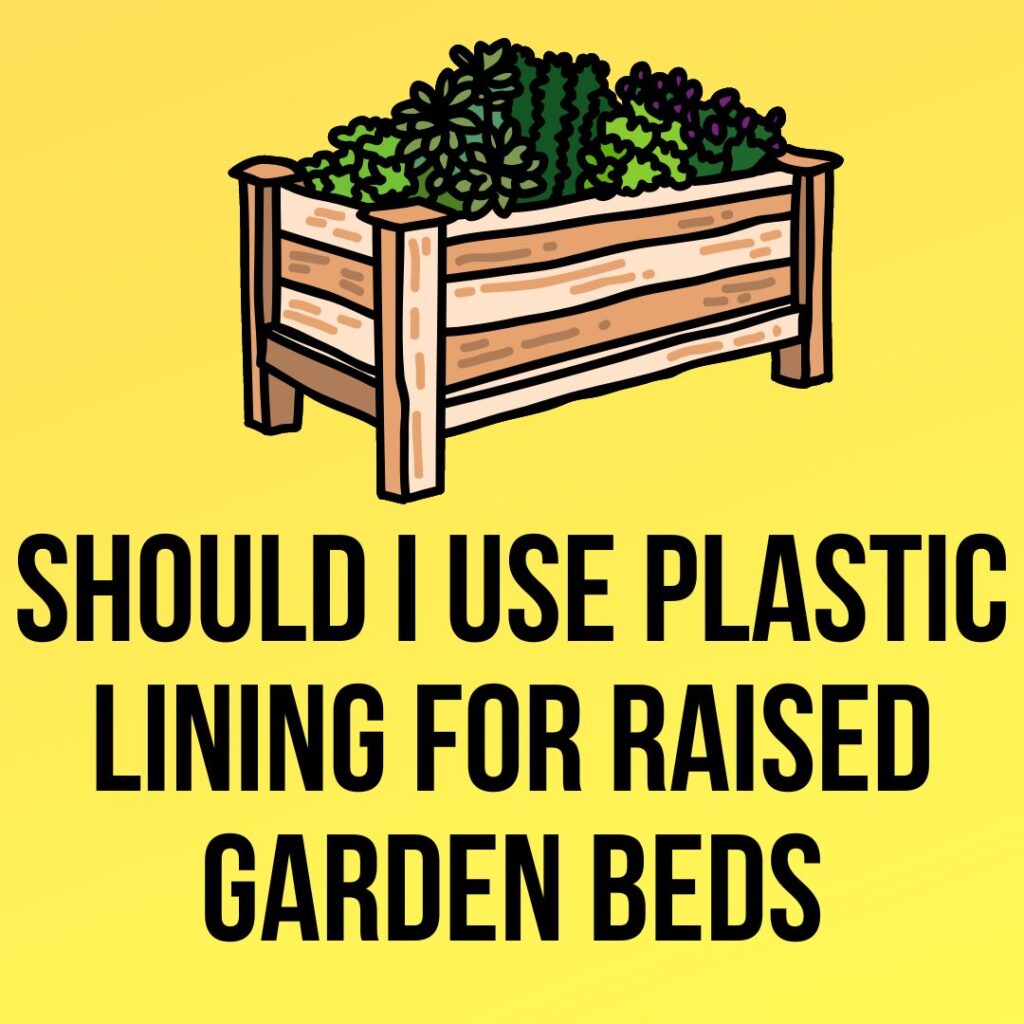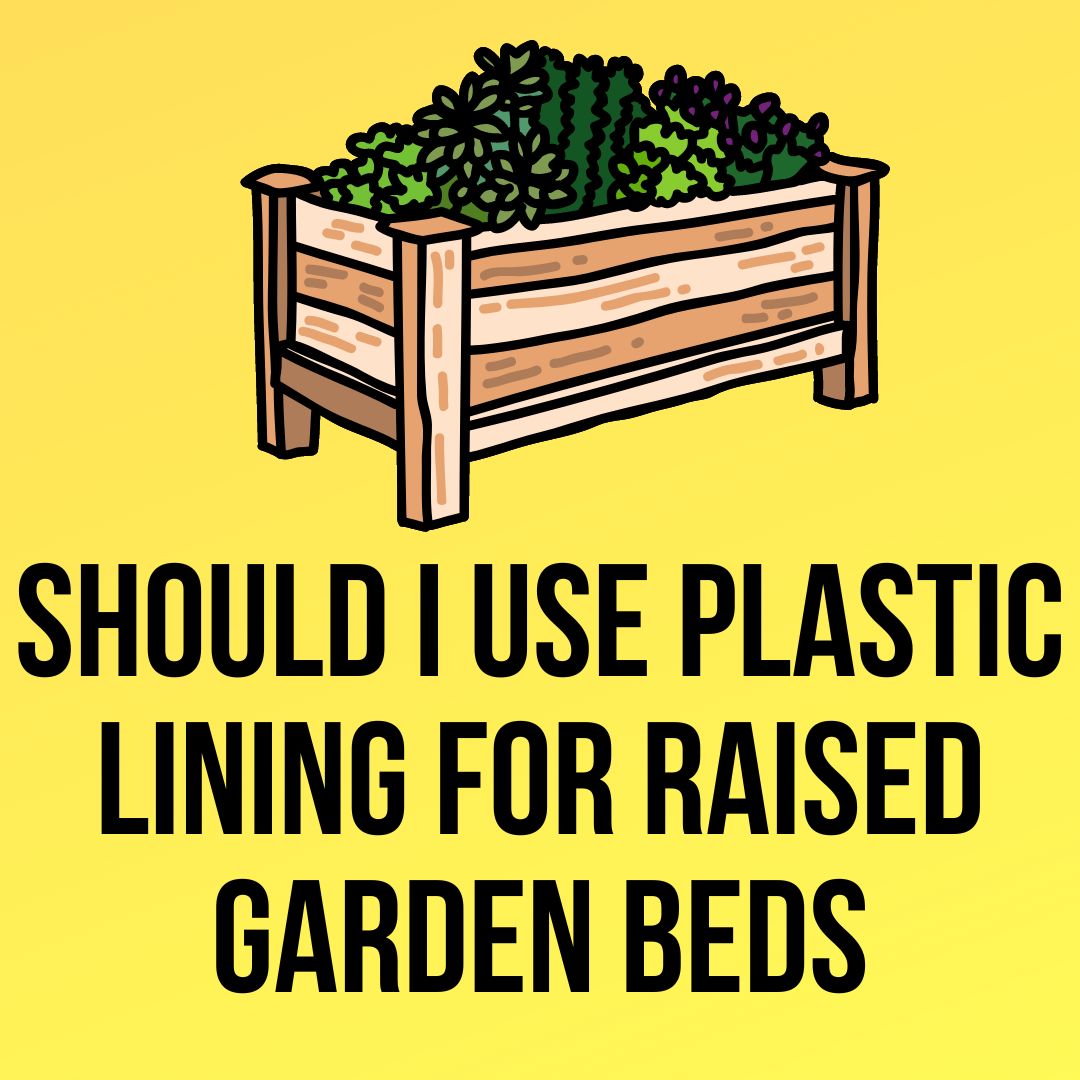If you have a raised garden bed, you could be thinking about whether or not it is a good idea to line it, and if so, what material you should use. When it comes to lining raised beds, I looked into the benefits as well as the drawbacks, and I discovered some of them. If be honest, raised beds to have their pros and cons just like the other production methods.
So, the first question is, should I use plastic lining for raised garden beds? The benefits of lining a raised garden bed too much exceed the drawbacks, therefore you should do it. When you use a liner in your raised garden bed, the soil will be protected from high temperatures, pests like moles and gophers will be excluded, and weeds won’t be able to thrive. Additionally, a raised bed liner enables water to flow away without removing any of the soil.
When it comes to the materials that should be used for lining a raised garden bed, most enthusiasts ask if plastic lining would do good for their production.

Should you use Plastic lining For Raised Garden Beds?
No. You should not line your raised garden bed with plastic. Plastic does not allow water to pass through it. If you have an excessive amount of rain, there will be nowhere for the water to go, and the soil in your garden will get muddy, which will ultimately result in the demise of your plants. Even if there isn’t a lot of precipitation, the risk of overwatering is increased because of this factor.
So, in this case, put a layer of landscape cloth at the bottom of your bed if it is shallow and you are worried about weeds or roots growing through it. This will prevent the bed from being clogged with unwanted growth. This material does not prevent weeds and roots from growing through it, but it does allow water to pass through it, which means that waterlogging will not occur as easily as it would if you were using plastic instead.
Plastic lining for raised garden beds should be avoided since it obstructs drainage and may result in the death of plants by drowning their roots. Consider putting a mix of metal mesh and fabric or hardware cloth and cardboard if you have a problem with both weeds and pests.
This will allow you to take advantage of the advantages of both types of mesh at the same time. Plant roots and the microorganisms that live in the soil may struggle to get oxygen if an impermeable covering of plastic is placed over the ground. When all of the water that falls on the plastic eventually fills the holes, the roots that are planted in those apertures may have an even more difficult time breathing.

Can I use plastic lining for a specialized raised garden bed?
Everything hinges on how you want to lay out the garden beds, including their proportions and, in particular, their wall heights. If it should be treated wood or built from untreated sleepers, then you may line the walls with plastic (Just black construction plastic), but it won’t be smart to fill the bottom with plastic. In order to ensure proper drainage, the bottom should be covered with a mixture of coarse pebbles.
To address your question in a nutshell: yes, it is possible to put a plastic liner in a raised bed for growing veggies. Having said that, there are a few factors that should be kept in mind.
First, check that the plastic liner is safe for use with food. Because of this, any contaminants that may be present in the plastic won’t be able to seep into the soil and taint the food you grow. Second, when the weather is colder, you should think about using a liner that is thicker than usual to assist insulate the soil and keep the roots warm. Lastly, in order to forestall the accumulation of moisture and decay, you need to ensure that the raised bed has enough ventilation.
If you keep these things in mind, putting a plastic liner inside of your raised bed for veggies may be an excellent method to shield your plants from all kinds of damage, including those caused by insects and bad weather.
A raised bed may be constructed in a quick and straightforward manner using plastic liners at a low cost. They are also lightweight and simple to move, making them excellent for situations in which you have limited space or want the flexibility to modify the arrangement of your garden. Just keep in mind that there are a few measures you need to take in order to guarantee that your veggies have enough space to develop. For example, the liner has to be at least 6 inches deep, and you need to make sure that there are holes poked in the bottom of the liner for drainage.

Should I put a plastic layer to keep roots out?
If you want to do that, you will need to drill some drainage holes in it. The majority of individuals only resort to this method if the soil that is underneath them is of low quality or if they need to alter the pH of the bed because the natural soil in their area is not suitable for cultivating the plants that they need to cultivate. If you are planning to fill it with anything that has roots that run like crazy, like mint or horseradish, then it could be worth the trouble. Otherwise, I wouldn’t bother. If you are intending to place it on a hard surface, though, that is an entirely other situation.
Conclusion
Naturally, there are a few drawbacks associated with the use of raised bed liners, and we will go over them as well. As mentioned in this article, you must not use plastic for lining if your garden is not a veggie one, and make sure to make holes in the layer.
Hopefully, this article comes with your help. Happy reading and happy gardening!
